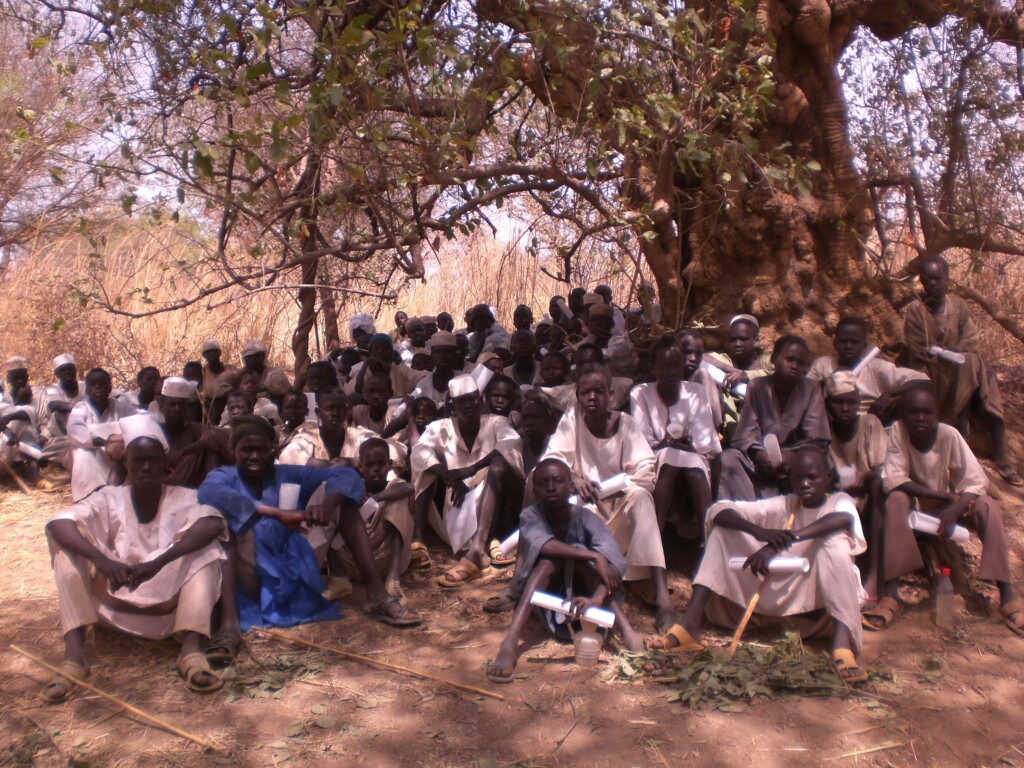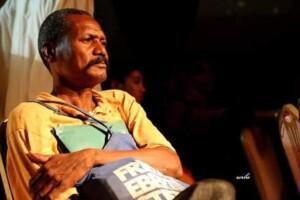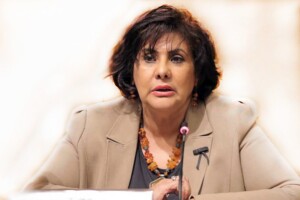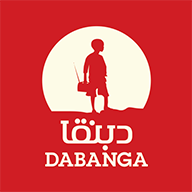Sudan’s struggle on international day for remembrance of the slave trade

Group of Sudanese youths freed from slavery in 2008 - boys did not know they would be freed - many were enslaved for up to 15 years - each in mid to late teens - each slave traded for cow vaccine (File photo: CC BY-NC-SA 2.0)
Each year on 23 August, the world observes the International Day for the Remembrance of the Slave Trade and Its Abolition, marking the Haitian uprising of 1791 that ignited the process of ending the transatlantic slave trade. UNESCO describes the observance as a moment to preserve the memory of slavery, to reflect on its legacies, and to safeguard cultural survival through education and collective action.
For Sudan, the day’s significance is painfully present. Its current humanitarian crisis and ongoing conflict are deeply rooted in historical legacies of slavery and structural violence.
The United Nations Remembrance Programme highlights the continuing relevance of this history, stressing that remembrance is not merely about mourning the past but about resisting ongoing forms of oppression.
In 2023, the UN adopted the theme “Fighting slavery’s legacy of racism through transformative education,” reminding the world that systemic injustice remains embedded in contemporary societies.
Historical context of slavery in Sudan
Sudan’s experience with slavery persisted well into the early 20th century. During the Turco-Egyptian era (1821-1885) and the Mahdist state (1885-1898), slavery remained deeply entrenched, often involving enforcement by local militias.
Under Anglo-Egyptian rule (1899-1956), there was gradual suppression of the slave trade, but many freed individuals continued to endure forced labour and extreme marginalisation.
After independence in 1956, structures of marginalisation persisted. General Ibrahim Abboud’s regime (1958–1964) pursued Arabisation policies that excluded southern and non-Arab groups.
In 1970, Jaafar Nimeiri passed the Unregistered Lands Act, which dispossessed Indigenous communities such as the Nuba, Masalit, Beja, Fur, and Zaghawa. Research by Anti-Slavery International shows that land seizures and conflict during this period perpetuated patterns of servitude and abductions well into the late 20th century.
During the second civil war (1983-2005), abductions and slavery-like practices escalated. Human Rights Watch documented how militias allied to Khartoum abducted women and children from southern communities, forcing them into domestic servitude or labour camps.
Even into the early 2000s, slavery-like practices persisted. Human Rights House noted that more than 14,000 men, women, and children were abducted and forced into slavery in Sudan between 1986 and 2002.
These patterns of enslavement and systemic marginalisation show that Sudan’s experience of slavery cannot be confined to the past. The International Day for the Remembrance of the Slave Trade and Its Abolition therefore resonates not only as history, but as a call to confront the unfinished business of abolition still visible in Sudan’s wars and displacement today
Sudan’s current humanitarian crisis
More than 25 million people in Sudan now require urgent aid, according to OCHA. In April 2025 UNICEF confirmed that 15 million people are now displaced both internally and across borders, the world’s largest child displacement crisis. More than half of all displaced are children, and one in three is under five. Over 6.5 million children are now uprooted, the highest figure anywhere in the world. An EUAA humanitarian press release added that of 11.5 million internally displaced persons, 53 per cent are children and 55 per cent are women.
The Global Slavery Index (2023) estimates that in 2021 approximately four in every 1,000 Sudanese, or about 174,000 people, lived in modern slavery encompassing forced labour and forced marriage. The country ranked 112th globally and 32nd in Africa for this burden.
Sudan is also identified as a source, transit, and destination for trafficking victims, particularly women and children, ranking 14th worldwide in prevalence per capita.
A devastating cholera outbreak has already claimed thousands of lives in 2025, with over 100,000 suspected cases reported as health systems collapse. By mid-2025, the epidemic had spread to 17 of Sudan’s 18 states, with Médecins Sans Frontières (MSF) warning that hospitals in Tawila, North Darfur, are treating more than 2,000 new cases each week, far beyond capacity. UNICEF confirmed this is the worst cholera outbreak in decades.
Women and girls face widespread sexual violence, trafficking, and forced marriages in displacement camps. In Darfur, reports of ethnic cleansing and mass graves echo the darkest chapters of Sudan’s past conflicts.
By May 2025 the United Nations documented 368 incidents of conflict-related sexual violence involving at least 521 victims, more than half of them rapes, many carried out by RSF fighters with ethnic targeting. Human Rights Watch reported in December 2024 that RSF forces and allied militias held women and girls, some as young as seven, in sexual slavery in South Kordofan. Radio Dabanga has separately documented systemic patterns of sexual violence by RSF forces in Darfur and displacement camps, reinforcing that sexual violence is being used as a weapon of war across the country.
Food insecurity is critical. In July 2025 the Integrated Food Security Phase Classification (IPC) confirmed famine in displacement camps and reported that 24.6 million Sudanese face crisis levels of hunger or worse. The statistics on displacement and famine illustrate that Sudan’s people are still living under conditions of mass uprooting and structural violence that echo slavery’s legacies.
Meanwhile, the Rapid Support Forces (RSF) attempt to entrench control in Darfur by forming a parallel authority, deepening the political fracture and undermining Sudan’s sovereignty. Hospitals, schools, and food convoys continue to be targeted, leaving civilians in a cycle of starvation and siege.
These humanitarian catastrophes show that the abolition of slavery is not a closed chapter in Sudan, patterns of exploitation, violence, and systemic dispossession persist, demanding global remembrance to translate into urgent action.
Sites, cultural memories and resilience
Sudan also contains sites and cultural memory that embody UNESCO’s theme of remembrance. One of the most significant is Deim Zubeir, located in present-day South Sudan. Once a major slave market during the 19th century, it became a hub in the regional slave trade that stretched from the Bahr El Ghazal region into the wider Ottoman and Egyptian networks.
Today, Deim Zubeir has been recognised on UNESCO’s Tentative List for World Heritage as part of the Slave Route Project, highlighting its historical importance and its role in preserving memory for communities whose ancestors were enslaved. By placing Deim Zubeir on this list, UNESCO underscores the need to transform a site of trauma into a place of reflection and
The legacy of slavery also emerges in modern narratives of escape and advocacy. Francis Bok,a Dinka boy enslaved at age seven during a militia raid in 1986, endured ten years of bondage before escaping and eventually becoming a prominent abolitionist and author, in the United States and internationally. His testimony illuminates how slavery’s legacy continues to shape lives across generations, connecting Sudan’s historical memory with present-day struggles for dignity and justice. Watch Bok’s interview video, Escaping Slavery on YouTube, University of Central Florida.
Another compelling story is that also emerges in personal stories of endurance and advocacy. Mende Nazer, a Nuba woman abducted as a teenager and forced into slavery in Khartoum, was later trafficked to London but managed to escape. Her ordeal and survival, supported by anti-slavery advocacy and public media, highlight how survivors of slavery not only resisted bondage but became credible advocates for justice and memory. Her story has since inspired literary works and dramatic productions, emphasising the resilience and enduring cultural resistance of Sudanese voices.
Preserving such memory is not only about individual stories. Sudan Memory is a vital institutional initiative dedicated to conserving and promoting the country’s cultural and documentary heritage through digitisation. Led by King’s College London with local partners, the project has scanned thousands of pages, photographs, films, and documents from archives, making them accessible online for current and future generations. It represents a collective effort to protect Sudan’s history despite environmental threats, conflict, and neglect.
By preserving these sites and amplifying the voices of survivors, Sudan contributes to UNESCO’s call for remembrance as resistance, ensuring that the legacy of slavery fuels collective resilience rather than silence.
Through monuments, testimony, and archives, Sudan’s memory of slavery becomes a lived resistance, ensuring that the International Day is not just historical, but deeply present.
Art is resistance and survival:
UNESCO emphasises that the remembrance of slavery and its abolition is carried forward through culture, music, dance, oral traditions, literature, and visual arts. Enslaved communities preserved memory and resistance through creative expression, and UNESCO calls on today’s youth, educators, and artists to continue this legacy. For Sudan, this bridge is clear: young Sudanese creators use culture and art to remember martyrs, resist oppression, and protect identity.
Beyond individual stories and historic sites, cultural memory continues to be transmitted among Sudanese communities today. Ethnographic work by Maciej Kurcz published in Ethnologia Polona (2019), shows how descendants of enslaved groups in Sudan keep alive the legacy of slavery through oral histories, rituals, and everyday cultural practices. In Omdurman and Khartoum, Kurcz observed how these communities connect their present-day struggles against marginalisation with memories of their enslaved ancestors. These oral traditions do more than preserve history, they provide frameworks for resilience, identity, and solidarity.
Sudanese cinema has re-emerged as a living archive of resistance, carrying the weight of memory into global spaces. Hajooj Kuka‘s acclaimed documentary Beats of the Antonovcaptures life in Sudan’s war zones, where music and communal rituals become essential tools of survival. The film, which won international documentary prizes and was broadcast widely, introduced global audiences to the ways Sudanese communities transform suffering into resilience.
Building on this, Suhaib Gasmelbari’s Talking About Trees turns the camera inward to Sudan’s cultural heart. Recounting four veteran filmmakers as they attempt to reopen a shuttered cinema under censorship, the film shows how even the simple act of watching films can become a form of quiet civil resistance. Its success at the Berlin International Film Festival signalled both a revival of Sudanese cinema and the enduring power of collective memory on screen.
Mohamed Kordofani advanced this trajectory with Goodbye Julia, the first Sudanese feature selected at the Cannes Film Festival. By confronting racism and reconciliation in the aftermath of secession and revolution, Kordofani places Sudan’s historical injustices before the world stage, weaving personal stories with the political fractures that continue to haunt the nation.
At the same time, Amjad El Nour, a filmmaker and journalist at Al Jazeera’s digital platform, has become a vital voice in Sudan’s cultural revival. He began by posting short films on YouTube that challenged Sudan’s negative media image and spotlighted forgotten stories from home .Known for inventive, viral satirical videos, El Nour disrupts censorship, using satire to critique power and injustice, which quickly gained regional attention Through his storytelling, Rl Nour elevates Sudanese memory and resistance in the digital age, reinforcing how creative media continues to sustain cultural survival.
Photographers in Sudan have turned their cameras into both witnesses and memorials, capturing war’s harsh realities while preserving humanity through evocative imagery.
Hashim Nasr, once a dentist, has transformed his art into a form of emotional testimony. Since the civil war began in 2023, Nasr has used stark, surreal symbolism, like red fabric draped over anonymous figures, to convey trauma, bloodshed, and displacement. His project On War and Displacement visually maps Sudan’s collective suffering from exile, blending haunting visuals with unspoken pain. The series has been featured in the Arab Documentary Photography Program and Middle East-focused publications. Nasr’s work won the East African Photography Award and stands as a compelling act of remembrance beyond reportage.
Ala Kheir, co-founder of the Sudanese Photographers Group, has spent years observing Khartoum’s rhythms with his lens, documenting street life, riverbank gatherings, and makeshift shelters in industrial outskirts. His images, which blend subtle critique with nostalgic intimacy, show the city’s endurance amid upheaval. Kheir’s work has been exhibited widely, including at “Reframing Neglect” in New York, and published by The Guardian. He also mentors emerging Sudanese photographers through platforms like Other Vision and the Centers of Learning for Photography in Africa.
Sudanese memory and resistance through visual art are vividly embodied in powerful public murals. Among the many creative voices, two artists stand out for their distinct approaches and lasting impact.
Assil Diab, known widely as Sudalove, has transformed city walls into solemn memorials. Through her Martyrs Graffiti project, she painted over 30 portraits of protesters killed during the January 2019 uprising, often on the walls of their family homes. Working under the constant threat of arrest or surveillance, she created living archives of grief and defiance. For many bereaved families, these portraits were more than art; they became public spaces of mourning and empowerment, turning everyday streets into sites of resistance.
Alaa Satir, meanwhile, has given Sudanese street art a distinctly feminist voice. Her bold illustrations and murals, such as the widely recognised We Are the Revolution, place women at the centre of Sudan’s struggle for justice. Combining visual symbolism with protest slogans, Satir’s work amplified women’s visibility during the revolution, transforming walls into calls for solidarity. In a movement where women played decisive roles, her imagery reinforced their leadership and permanently inscribed their presence into Sudan’s visual memory.
Together, the works of Diab and Satir show how Sudanese visual art has become both memorial and manifesto, bridging the pain of loss with the power of collective resistance.
Sudan’s performing arts scene pulses with poetic memory and theatrical grit, embodied in the works of Abu Zayd DeGale and Sara Elhassan, whose approaches bridge exile and revolution alike.
Abu Zayd DeGale blends spoken word, personal testimony, and performative storytelling into a powerful genre he terms “living theatre.” His one-man stage production, Living in Limbo, charts the emotional terrain of exile, recalling a life uprooted by conflict, survival in foreign lands, and the interwoven losses of homeland and identity. Praised in numerous interviews, the piece transforms personal grief into collective resilience, continuing Sudan’s rich oral tradition on global stages.
Sara Elhassan offers another, yet complementary, articulation of memory and dissent. Her spoken-word piece, Video Response, directly rebuts a televised insult aimed at Sudanese women, using poetic defiance to confront misogyny and cultural pain. The performance went viral in Sudan, stimulating discussion about appearance, respect, and gendered expectations. Elhassan’s work amplifies the power of words to disrupt public discourse and ignite social change.
Among the many musical voices carrying Sudan’s memory forward, Ayman al‑Rubo and Elmiene uniquely embody the power of song as resistance and emotional reflection, each in their own realm.
Ayman El Rubo is widely recognised as the founder of the Sudanese urban genre Zenig, a style that fuses West African beats, Egyptian mahraganat, and street performance. Emerging from Khartoum’s underclass, El Rubo used this music to give voice to the frustrations and energy of marginalised youth.
In contrast, Elmiene (Abdalla Elamin), a British-Sudanese soul and R & B artist, gives voice to the exile and longing of Sudan’s diaspora. His acclaimed EP For the Deported (2024) explores displacement, memory, and resilience, weaving Sudan’s trauma into globally resonant melodies. Writing from abroad, Elmiene channels the personal experience of alienation into a universal story of home and loss. Critics have praised his music as both intimate and political, noting how his lyrical reflections connect with Sudanese communities scattered across the world. By transmuting displacement into soulful testimony, Elmiene expands the reach of Sudanese cultural resistance beyond borders, proving that music born in exile can still anchor a people’s collective memory.
Together, El Rubo and Elmiene show how Sudanese music carries both the fire of revolution and the ache of exile. One transforms protest into rhythm in the streets of Khartoum, while the other turns displacement into melody abroad. Both prove that Sudan’s cultural survival depends on sound, whether shouted from a barricade or sung in a diaspora hall.
Literature has long been one of Sudan’s strongest vehicles for memory and resistance. Through novels, short stories, and prose, Sudanese writers have preserved the voices of marginalised communities, chronicled the trauma of displacement, and re-imagined identity in times of upheaval. Their work transforms the page into both testimony and protest, ensuring that the experiences of Sudan’s people are neither erased nor forgotten.
Abdelaziz Baraka Sakin is often called Sudan’s most banned writer, and also one of its most celebrated. His novels, including The Jungo: Stakes of the Earth and The Messiah of Darfur, have been censored repeatedly inside Sudan for their uncompromising portrayal of slavery’s afterlives, ethnic marginalisation, and political oppression. Yet outside Sudan, his work has won international prizes and translation into multiple languages. Through his sharp storytelling, Sakin preserves the memory of communities often erased by official history, turning literature into an act of resistance and remembrance.
Leila Aboulela, writing primarily in English, offers a contrasting yet complementary contribution. Winner of the Caine Prize for African Writing, her novels such as Minaret and Lyrics Alley illuminate migration, faith, gender, and the layered identities of Sudanese in the diaspora. Her narratives gently yet powerfully weave the personal with the political, connecting family histories to the broader dislocations of colonialism and exile. Aboulela’s international acclaim has made her one of the most visible Sudanese voices in world literature, ensuring that the country’s cultural survival resonates well beyond its borders.
Fatin Abbas represents a new generation of Sudanese writers bridging local histories and global readerships. Her debut novel Ghost Season (2023) follows five characters living on the margins of conflict in Sudan, exploring themes of war, displacement, and belonging. Critics have praised Abbas for capturing the beauty and brutality of Sudan’s landscape while refusing to simplify its struggles. By centring ordinary people’s lives within extraordinary crises, she ensures that Sudanese voices remain present in contemporary global debates on memory, justice, and survival.
Together, writers like Sakin, Aboulela, and Abbas show how Sudanese literature bridges past and present, homeland and diaspora. In their words, the struggles of marginalisation, exile, and survival are carried forward as cultural memory and moral witness. Their voices remind the world that Sudan’s story, though silenced at home, continues to speak powerfully on the global stage.
Sudan’s cultural survival depends not only on individual artists but also on collective spaces that nurture solidarity, memory, and resistance through art.
Contraband is a pioneering Sudanese social enterprise that merges art, culture, and innovation to support communities impacted by conflict and economic hardship. Through creative workshops, digital storytelling, and public events, Contraband empowers local talent, promotes civic engagement, and builds resilience across urban and displaced communities. The organisation’s projects blend creative expression with advocacy and financial tools, restoring agency to artists and reinforcing the idea that cultural memory is also a lifeline for social change.
Khartoum Contemporary Art Centre (KCAC) has become a vital cultural beacon for Sudanese art, especially since the 2019 revolution. Although currently displaced due to conflict, KCAC remains active as a virtual and public hub, hosting exhibitions, panel discussions, and educational programmes that nurture emerging artists and preserve Sudan’s vibrant art scene. It links local and diasporic artists, making art a living archive against cultural erasure.
Together, Contraband and KCAC illustrate how collective cultural spaces foster unity, resilience, and memory. Whether through grassroots projects or curated exhibitions, these hubs safeguard the creative spirit of Sudan, ensuring remembrance is woven into everyday life, and that culture continues to resist erasure.
From Remembrance to Action
On August 23, International Day for the Remembrance of the Slave Trade And Its Abolition is not only about remembering slavery’s abolition, but also about recognising contemporary struggles against injustice. For Sudan, remembrance must become action: ensuring safe humanitarian corridors, protecting civilians, amplifying artists’ voices, and holding perpetrators accountable for atrocities. The message is clear: memory must inspire solidarity, and solidarity must translate into justice.











 and then
and then